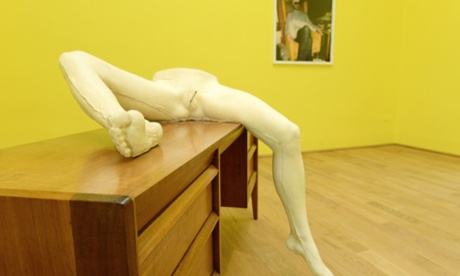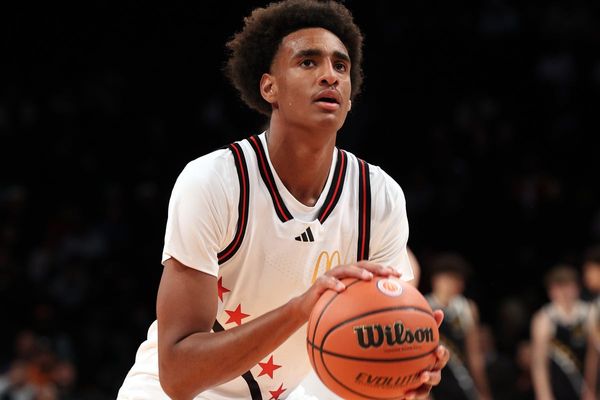
Sarah Lucas – the YBA who, as a young woman, photographed herself with a pair of fried eggs slapped on her breasts – has turned down a Turner prize nomination twice; she has, in her time, been better known for rabble-rousing in the Groucho club than being officially clubbable.
But when the Venice Biennale opens to the public on 9 May, Lucas will be representing Great Britain at this most prestigious of international art world events.
True to form, her show has a strong streak of naughtiness. For a start, it begins with a 3-metre tall, sunshine-yellow penis (the piece is titled Gold Cup Maradona) thrusting its way joyfully skywards. The sculpture is, according to Lucas, “a very lickable kind of a guy”. Meanwhile, inside, 10 plaster casts of the bottom halves of women are draped over pieces of furniture, each with a cheeky cigarette protruding from anus or vagina. The exhibition is bawdy, funny, irreverent and sexy but at the same time elegant and spare: in other words, classic Sarah Lucas.
The idea for the casts of women’s lower halves came from a similar sculpture of Lucas’s that was lost in the fire in the Momart art storage facility in 2004 – a cast of the lower half of her naked body sitting on a table, the vagina sporting a cigarette. A decade later, she woke up realising she had dreamed of the lost sculpture and began to think about remaking versions of it.
She spent a hot summer in London with a set of close female friends, among them her gallerist Sadie Coles and the chef Margot Henderson, the women casting each other in a rough-and-ready way in plaster. These women are, she says, her “muses”.
“No one’s told me off about the fannies yet,” she said. “You don’t tend to see ’em much, do you, outside of pornography.” And the cigarettes? “It’s a bit of blowing off, isn’t it? A fart in the direction of the viewer.”
The exhibition also contains a spot painting, a form of art that has become emblematic of Britain, according to Lucas, after Damien Hirst made the genre internationally famous. She remembered, she said, that those employed by Hirst to make his spot paintings would often ask him to give them one – meaning one signed by him; he’d tell them to make their own. Lucas has done just that, with each spot filled with images of topless young women sourced from tabloid pictures. After working on three paintings, she said, “I thought, ‘Just put the tits.’”
The entire exhibition is surrounded by yellow: the walls of the British pavilion have been painted a startling shade that radiates sunshine and is reminiscent of bananas, custard, or egg yolks. The associations are deliberate: the exhibition is meant to be like a dessert, according to Lucas. Iles flottantes, perhaps – the meringue-like bottoms of the plaster casts floating in a sea of custardy yellow.

She regards the show, she said, as “absolutely for women. Well I am a woman, I can’t take that out of it. I don’t think the world’s fair. Yes, I am a feminist, and it is a feminine show. I am not on my soapbox about it, but yes, I wanted this to be a strong feminine show.” She added: “I didn’t want to make a career about being angry because I felt that that would be so bad for my health in the long term.”
The 56th Venice Biennale brings together 89 national pavilions – including, for the first time this year, exhibitions staged by Mongolia, Mozambique, Ecuador and the Philippines. There are also dozens of collateral events including pavilions for Wales, represented by photographer and film-maker Helen Sear, and Scotland, represented by sculptor and film-maker Graham Fagen.
Alongside the national pavilions, the Biennale also contains a large central exhibition, organised by an invited curator at each edition. This year it is curated by Okwui Enwezor, the director of the Haus der Kunst in Munich. Entitled All the World’s Futures, Enwezor’s show will feature daily readings from Marx’s Das Kapital and an exploration of factory working conditions from the 19th century to the present day by British artist Jeremy Deller. The Venice Biennale runs from 9 May to 22 November.
- Sarah Lucas’s British Council commission is at la Biennale di Venezia from 9 May until 22 November.







